Key Specs
Since many of our users are going to want to run different OSes on this, we wanted to give some of the key hardware specs. There is a lot on these machines that are customizable, but this at least gives you some sense of what hardware is available. If you want to know if your hardware is compatible with your OS, this list should help do that tie-out.
CPU Support
Here are the officially supported CPUs for the unit:
| PROCESSOR | TDP | Cores | Threads | SPEED | CACHE | INTEGRATED GRAPHICS |
| Intel Core i3-10100T | 35 W | 4 | 8 | 3.0 GHz to 3.8 GHz | 6 MB | Intel UHD Graphics 630 |
| Intel Core i3-10300T | 35 W | 4 | 8 | 3.0 GHz to 3.9 GHz | 8 MB | Intel UHD Graphics 630 |
| Intel Core i5-10400T | 35 W | 6 | 12 | 2.0 GHz to 3.6 GHz | 12 MB | Intel UHD Graphics 630 |
| Intel Core i5-10500T | 35 W | 6 | 12 | 2.3 GHz to 3.8 GHz | 12 MB | Intel UHD Graphics 630 |
| Intel Core i5-10600T | 35 W | 6 | 12 | 2.4 GHz to 4.0 GHz | 12 MB | Intel UHD Graphics 630 |
| Intel Core i7-10700T | 35 W | 8 | 16 | 2.0 GHz to 4.5 GHz | 16 MB | Intel UHD Graphics 630 |
| Intel Core i9-10900T | 35 W | 10 | 20 | 1.9 GHz to 4.6 GHz | 20 MB | Intel UHD Graphics 630 |
| Intel Core i3-10100 | 65 W | 4 | 8 | 3.6 GHz to 4.3 GHz | 6 MB | Intel UHD Graphics 630 |
| Intel Core i3-10300 | 65 W | 4 | 8 | 3.7 GHz to 4.4 GHz | 8 MB | Intel UHD Graphics 630 |
| Intel Core i5-10400 | 65 W | 6 | 12 | 2.9 GHz to 4.3 GHz | 12 MB | Intel UHD Graphics 630 |
| Intel Core i5-10500 | 65 W | 6 | 12 | 3.1 GHz to 4.5 GHz | 12 MB | Intel UHD Graphics 630 |
| Intel Core i5-10600 | 65 W | 6 | 12 | 3.3 GHz to 4.8 GHz | 12 MB | Intel UHD Graphics 630 |
| Intel Core i7-10700 | 65 W | 8 | 16 | 2.9 GHz to 4.8 GHz | 16 MB | Intel UHD Graphics 630 |
| Intel Core i9-10900 | 65 W | 10 | 20 | 2.8 GHz to 5.2 GHz | 20 MB | Intel UHD Graphics 630 |
RAM Support
- Up to 2x 32GB DDR4 SODIMMs (64GB total) DDR4-2933/ 2666 depending on the CPU used
Storage Support
- 2x M.2 PCIe Gen3 for NVMe SSD slots
- 1x 2.5″ SATA
Networking (Wired)
- Intel i219-LM (Required for vPro)
WiFi Support (Optional)
- Intel Wi-Fi 6 AX201, 11ax 2×2 Wi-Fi + Bluetooth 5.1, Intel vPro technology support, M.2 Card
- Qualcomm QCA61x4A, 802.11ac Wi-Fi + Bluetooth 5.0, M.2 card
- Qualcomm QCA9377, 802.11ac Wi-Fi + Bluetooth 5.0, M.2 card
USB Ports
- 2x USB 3.2 Gen2 Front (1x Type-A, 1x Type-C)
- 2x USB 3.2 Gen2 Rear (Type-A)
- 2x USB 3.2 Gen1 Rear (Type-A)
- Options for additional ports, as configured with a USB 3.2 Gen1 Type-C with DisplayPort
OSes From Factory
- Windows 10 Home (64-bit)
- Windows 10 Professional (64-bit)
- Windows 10 Pro Education (64-bit)
- Windows 10 IoT Enterprise 2019 LTSC (OEM only)
- NeoKylin 7.0 (China only)
- Ubuntu 18.04 (64-bit)
The OS section can be a big deal. Sometimes the units are advertised as supporting Windows 10, but one gets a Windows 10 Home license. If you want to, or may want to, run Windows 10 Pro, knowing exactly which OS is on the device is ultra important. Having Ubuntu Linux installed from the factory is nice since we know many of our readers will use these with Linux. We also had our system running Proxmox VE as a Linux virtualization node but that is not an officially supported OS. Ubuntu installed without issue. One also usually needs to make BIOS tweaks in order to run Linux on Lenovo machines since they are optimized for Windows but we did not with our test unit.
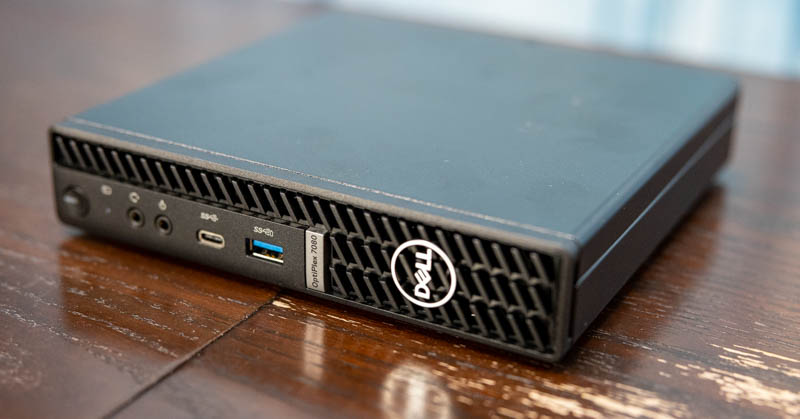
Note: These systems sometimes change specs mid-generation. If you find another spec sheet with items you think we should add, please let us know in the comments.
Next, we are going to look at the performance and power consumption before getting to our final words.
Dell OptiPlex 7080 Micro Performance and Power Consumption
Instead of going through the entire Linux-Bench test suite, we are going to show a few performance and power numbers here to give a general sense of performance. We actually planned to do storage testing, but then we realized that there was a huge variability in terms of what drives could be found in machines.
Python Linux 4.4.2 Kernel Compile Benchmark
This is one of the most requested benchmarks for STH over the past few years. The task was simple, we have a standard configuration file, the Linux 4.4.2 kernel from kernel.org, and make the standard auto-generated configuration utilizing every thread in the system. We are expressing results in terms of compiles per hour to make the results easier to read:
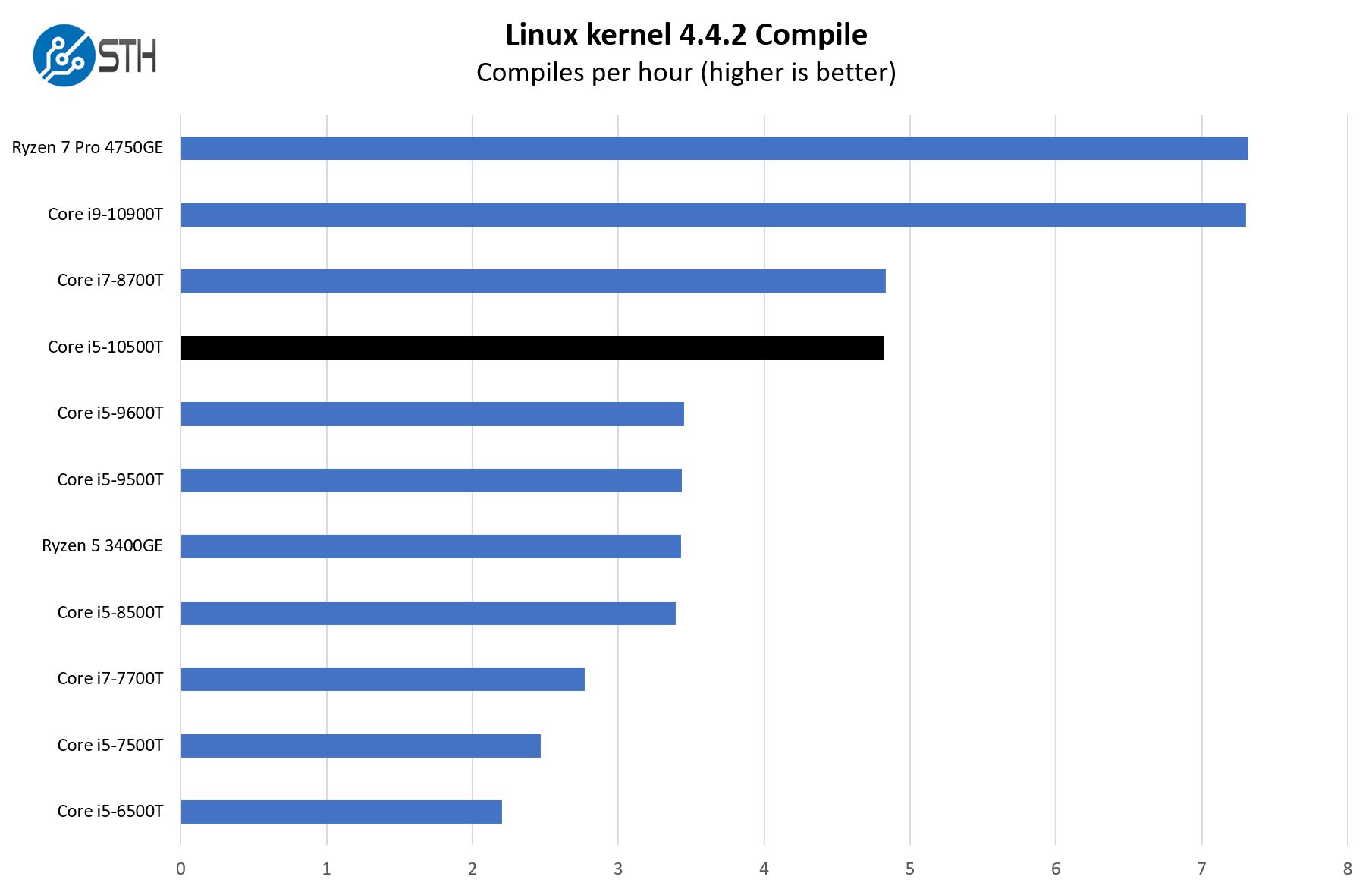
One thing is for sure, in terms of total compute capacity, even with a 35W TDP limit, the Core i5-10500T is quite a bit behind the top-end CPUs in this space like the Core i9-10900T and Ryzen 7 Pro 4750GE. For some time we had seen more compression in these numbers, but from what we have seen with the Intel Core i5-10500T, it is both a big upgrade over previous generations, but well behind the top-end models.
7-zip Compression Performance
7-zip is a widely used compression/ decompression program that works cross-platform. We started using the program during our early days with Windows testing. It is now part of Linux-Bench.
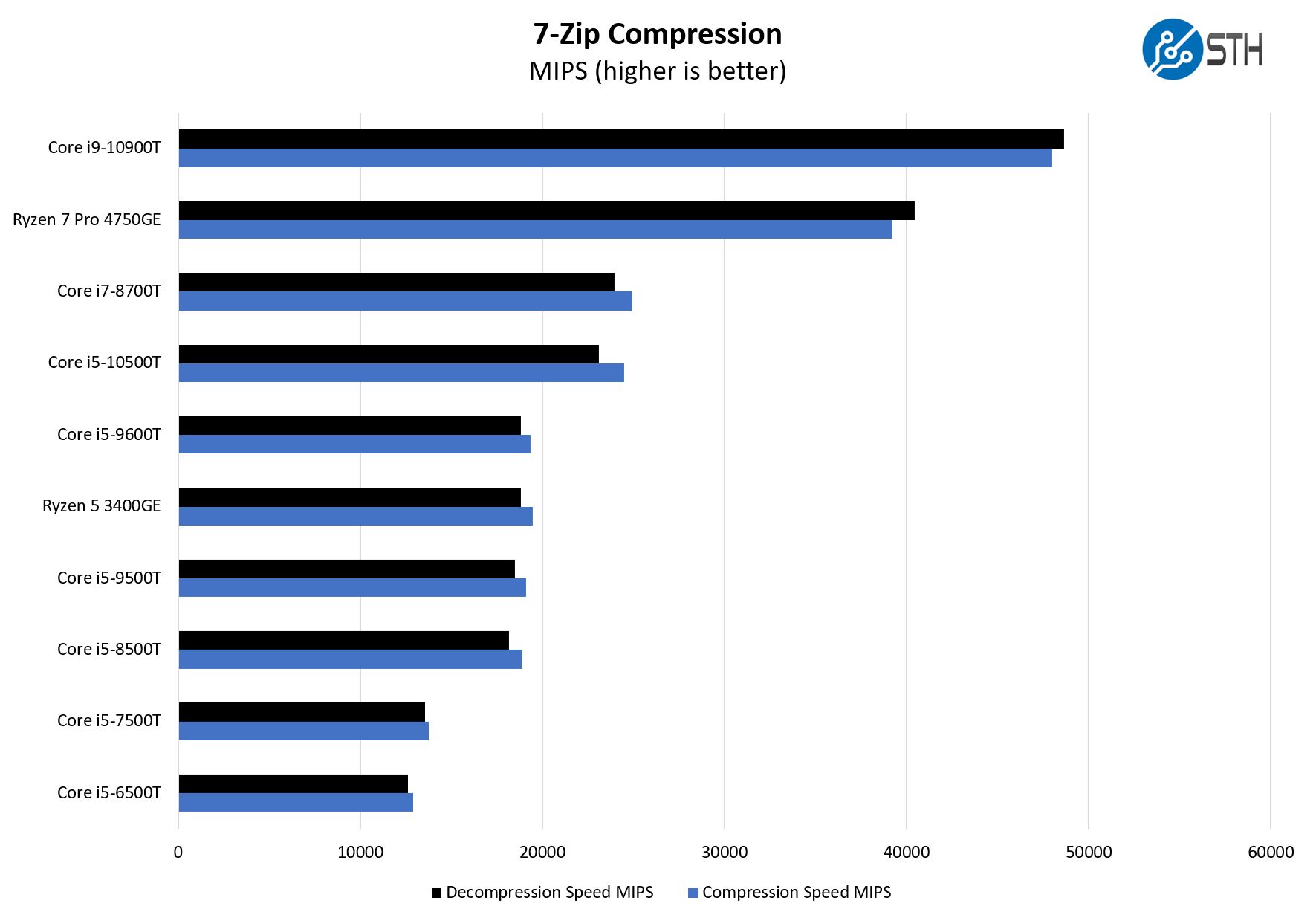
Something we are trying to show in these charts is the progression from the Core i5-6500T to the Core i5-10500T. Adding Hyper-Threading in this segment (finally) is yielding some solid performance gains. Here is a quick snapshot of the line over five generations:
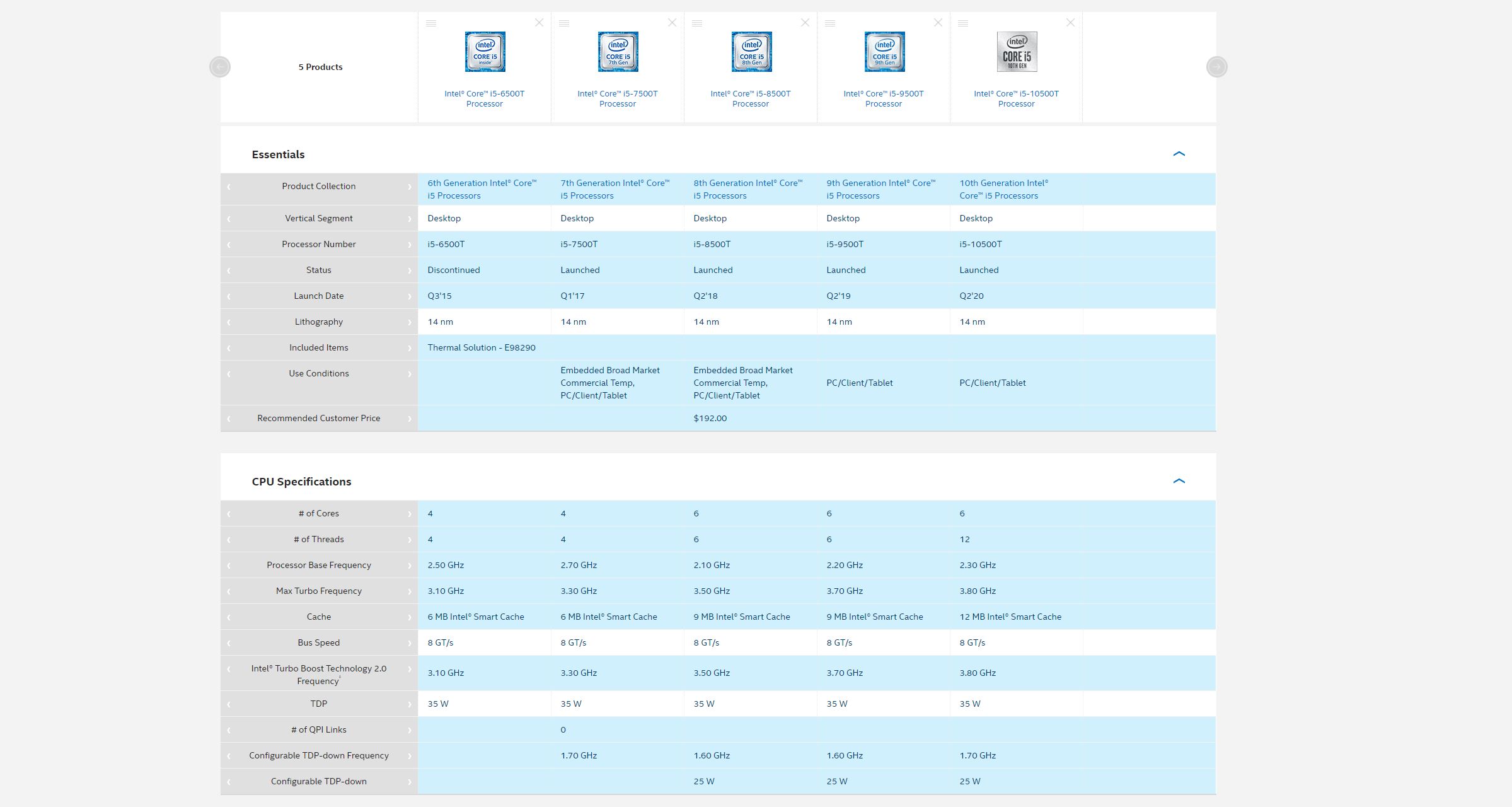
The key is that pre-Ryzen we had 4 cores/ 4 threads and small generational improvements. Now post-AMD Ryzen, we are at 6 cores/ 12 threads and around twice the performance of the Core i5-6500T.
OpenSSL Performance
OpenSSL is widely used to secure communications between servers. This is an important protocol in many server stacks. We first look at our sign tests:
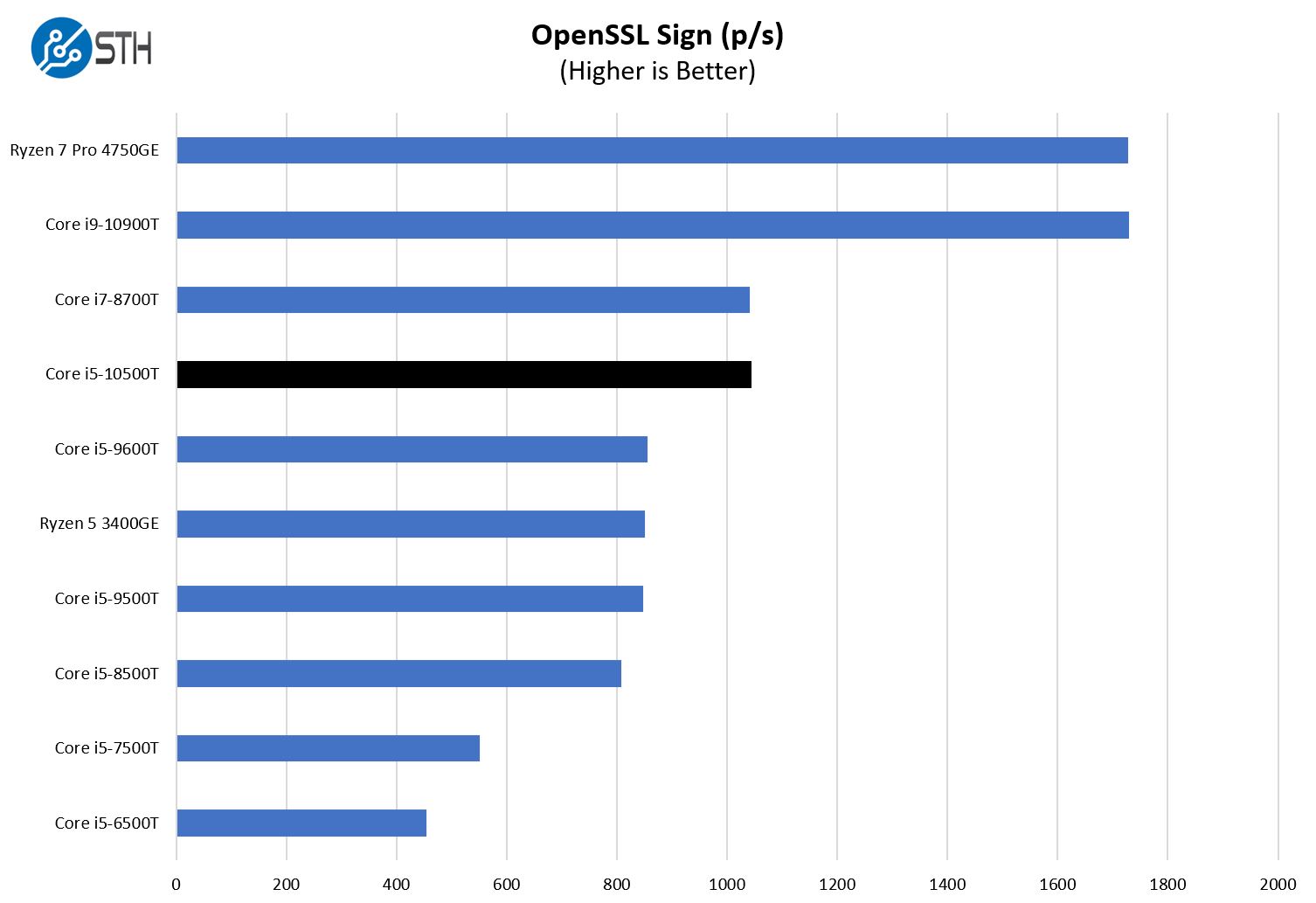
Here are the verify results:
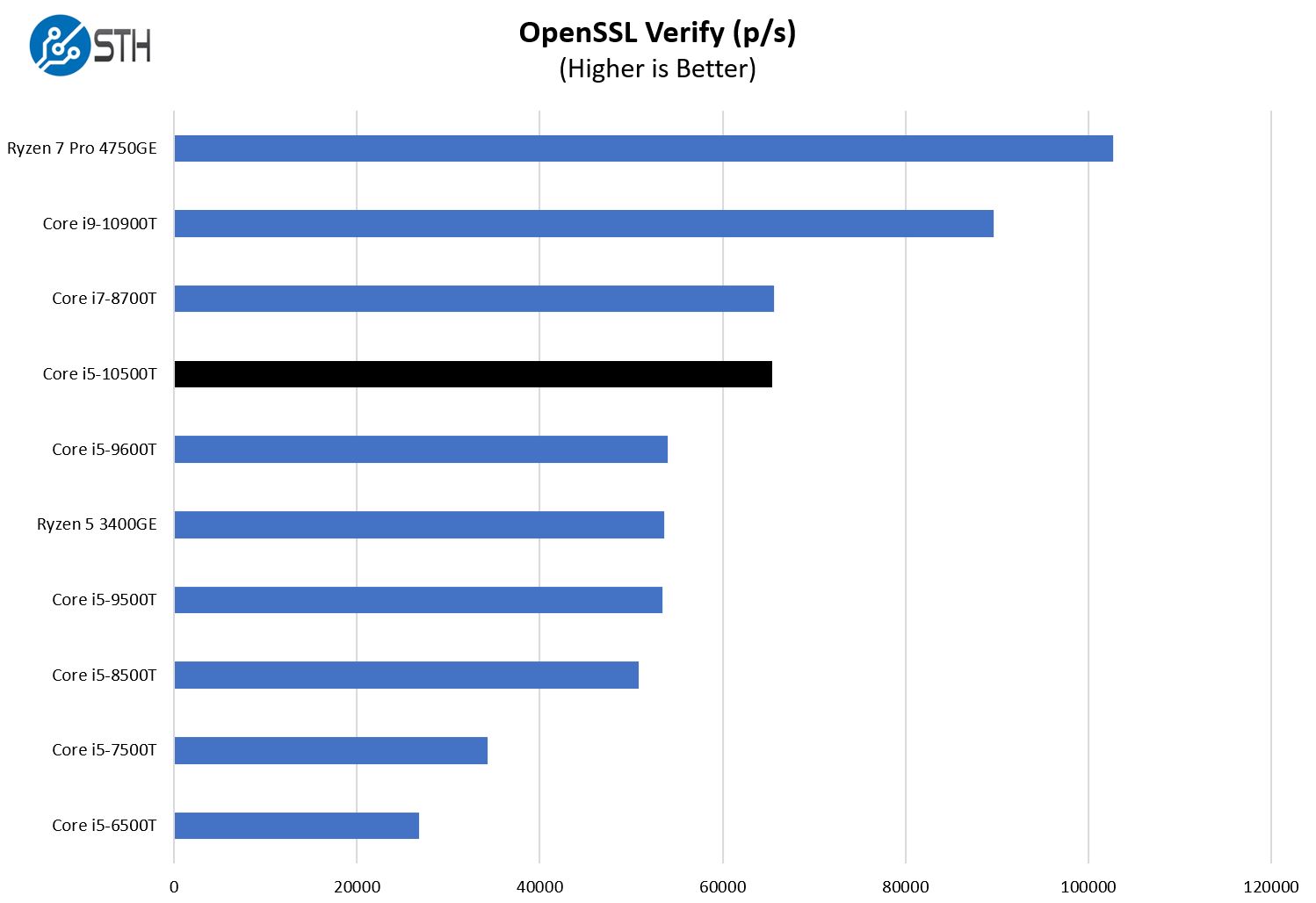
This chip is roughly equivalent to an Intel Core i7-8700T. They are not the same, but the performance in our testing was very close. The Core i7-8700T had the same 6 cores/ 12 threads and 12MB of L3 cache along with somewhat similar clock speeds. Perhaps this makes sense. We feel fairly comfortable saying we have Core i7 performance at the Core i5 level two generations later, just with newer features such as more USB 3.2 Gen2 from the Q470 PCH and the newer platform.
Next, we are going to take a look at power consumption before getting to our key lessons learned and final words.



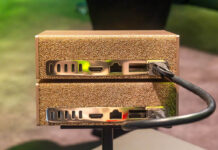
You compare it a lot with the NUC so instead you should be reviewing the optiple and 7090 ultra which is more like a NUC
Did you guys install ubuntu 18.04 or something more recent? I had to walk back on an itx build because the igpu support for uhd630 is broken on the recent *buntus
Thank you Patrick for a great review of DELL’s minimicro re-fresh.
Thank you for another great review, could you also consider looking at Dell Precision 3240 compact, from what I can see it looks like 2 of these units stacked together. It would be interesting to see if that unit is any better with a 65watt CPU
Optiplex 7080 with onboard graphics is poop as it doesn’t support a third display…
the intel cpu onboard won’t cut it as the shared memmory is not big enought, if you ordered the i7 model it would be enought for 2K Display as daisychained of two and another one so three in total..
the i5 1055T whatever does not have enought power :-/
Is there a serial port add-on option (not a PCIE card, but similar to the link copied below) for the 7080 Micro? Or one made for any of the 3000/5000/7000 series that is compatible with the 7080 Micro? https://www.dell.com/en-us/shop/dell-additional-hdmi-video-port-for-3060-5060-7060-micro/apd/325-bddz/pc-accessories
I have got one of these and want to upgrade the storage. Dell site says it can either support 1 NVMe, 2 NVMe, or 1 SATA with Optane. Has anyone with 7080Micro successfully used 3 SSDs i.e. 2 M.2 NVME and 1 SATA SSD together?